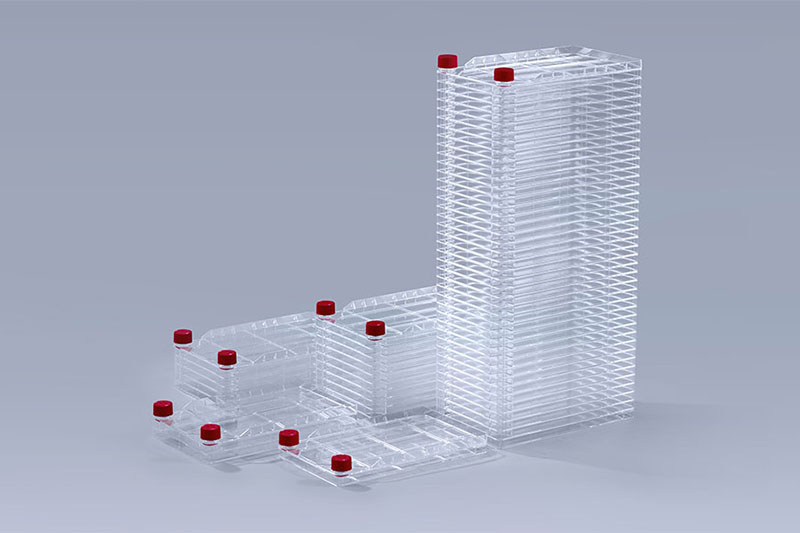The cell factory is an important cell culture container, which is processed from polystyrene raw materials and plays an important role in the large-scale culture of cells. So, what are the characteristics of this raw material?
Polystyrene is one of the five general-purpose plastics, which is polymerized from styrene monomer. Its characteristics are as follows:
1. Light weight, less water absorption, colorless and transparent, brittle, glass-like, tasteless and non-toxic;
2. Because the benzene ring increases the steric barrier of macromolecules and restrains molecular movement, the surface hardness and rigidity are high, and the dimensional stability is good; but the brittleness and impact strength are small, and the wear resistance and scratch resistance are poor.
3. Excellent electrical insulation performance, especially high frequency insulation;
4. The product has low impact strength and poor wear resistance;
5. Good coloring, surface decoration and radiation resistance, but poor sunlight resistance;
6. Poor sunlight resistance, excellent water, acid and alkali resistance, but poor oil resistance, soluble in aromatic hydrocarbons, chlorinated hydrocarbons, ketones and esters.
7. The molding performance is very good, and it can be processed by injection, extrusion molding, blow molding, thermoforming, foaming, bonding, coating, welding, machining, hot stamping, printing and other general thermoplastic molding processing methods.
The above are the characteristics of the raw materials of the cell factory. In addition, polystyrene is different from the glass material, and the surface itself is hydrophobic. Therefore, it must be specially modified to be suitable for the better growth of adherent cells.
The FAI climbed 5.9 percent year-on-year in the first 11 months of 2018, quickening from the 5.7-percent growth in Jan-Oct, the National Bureau of Statistics (NBS) said Friday in an online statement.
The key indicator of investment, dubbed a major growth driver, hit the bottom in August and has since started to rebound steadily.
In the face of emerging economic challenges home and abroad, China has stepped up efforts to stabilize investment, in particular rolling out measures to motivate private investors and channel funds into infrastructure.
Friday's data showed private investment, accounting for more than 60 percent of the total FAI, expanded by a brisk 8.7 percent.
NBS spokesperson Mao Shengyong said funds into weak economic links registered rapid increases as investment in environmental protection and agriculture jumped 42 percent and 12.5 percent respectively, much faster than the average.
In breakdown, investment in high-tech and equipment manufacturing remained vigorous with 16.1-percent and 11.6-percent increases respectively in the first 11 months. Infrastructure investment gained 3.7 percent, staying flat. Investment in property development rose 9.7 percent, also unchanged.
 English
English



















































 Cell Factory
Cell Factory